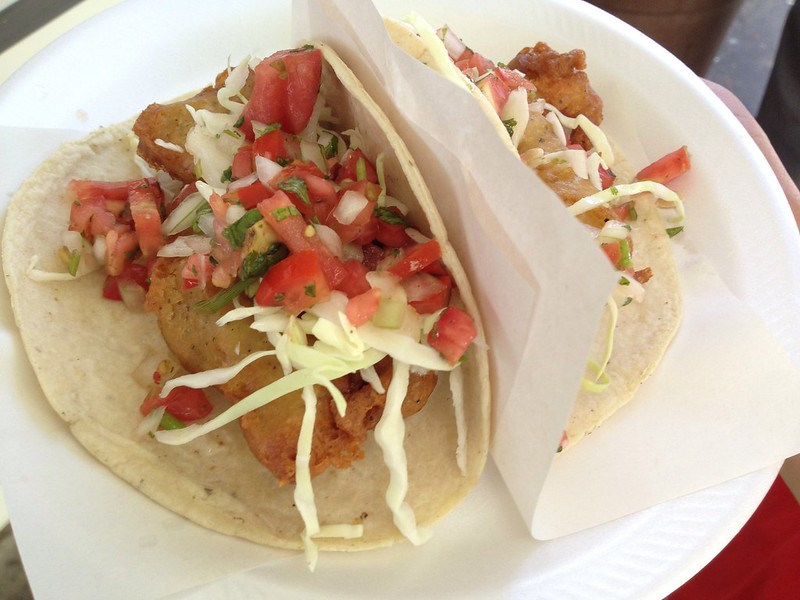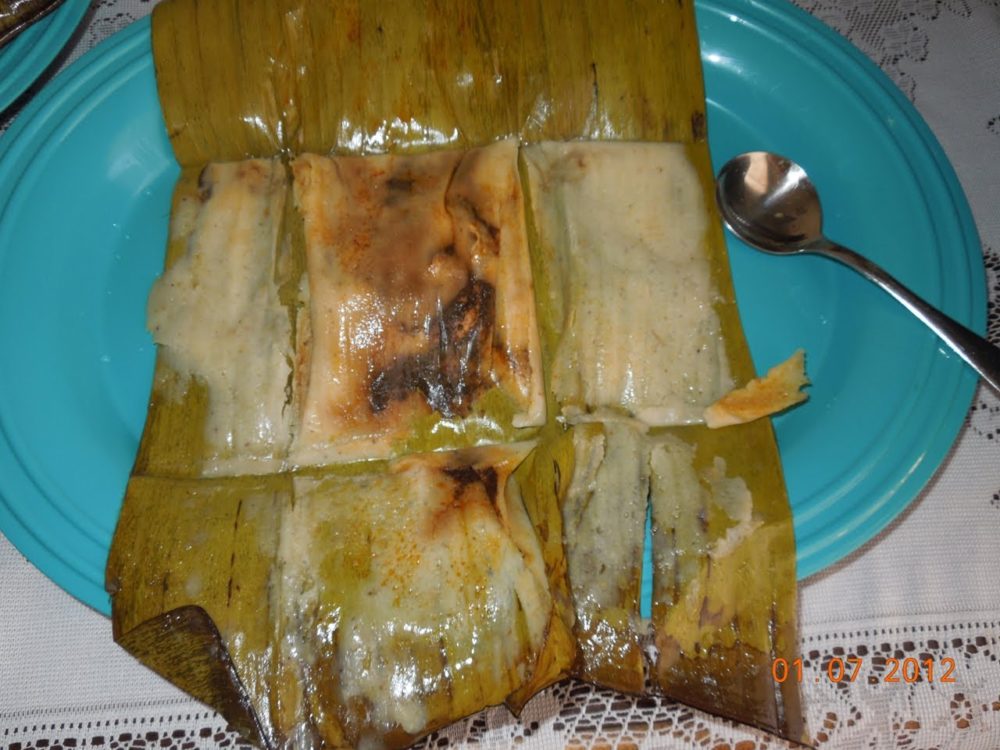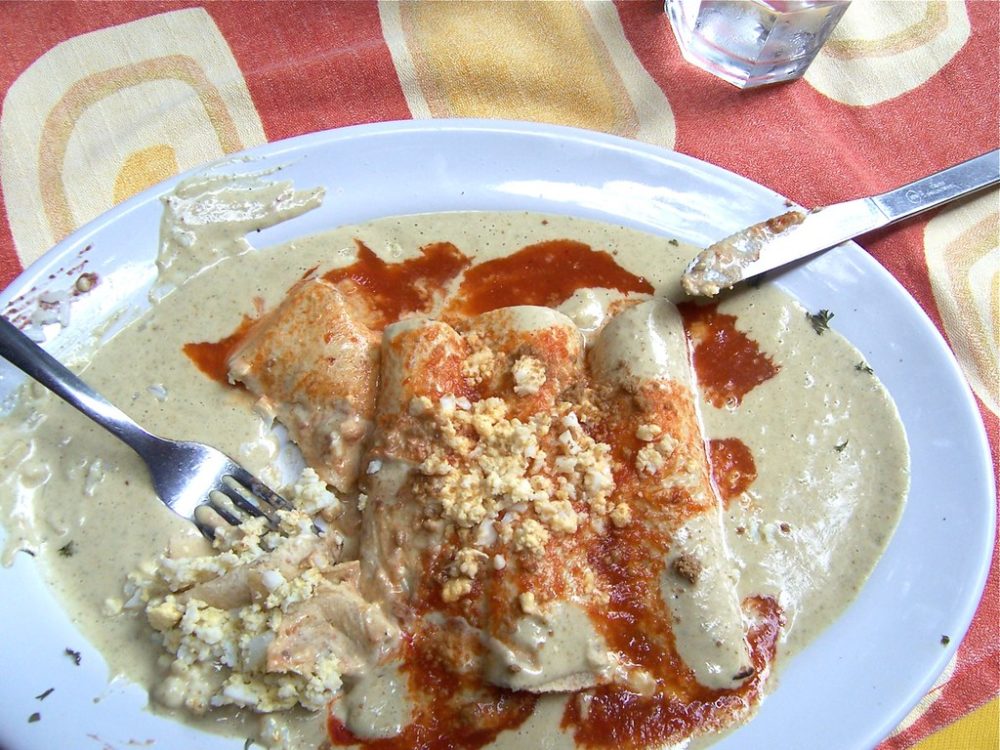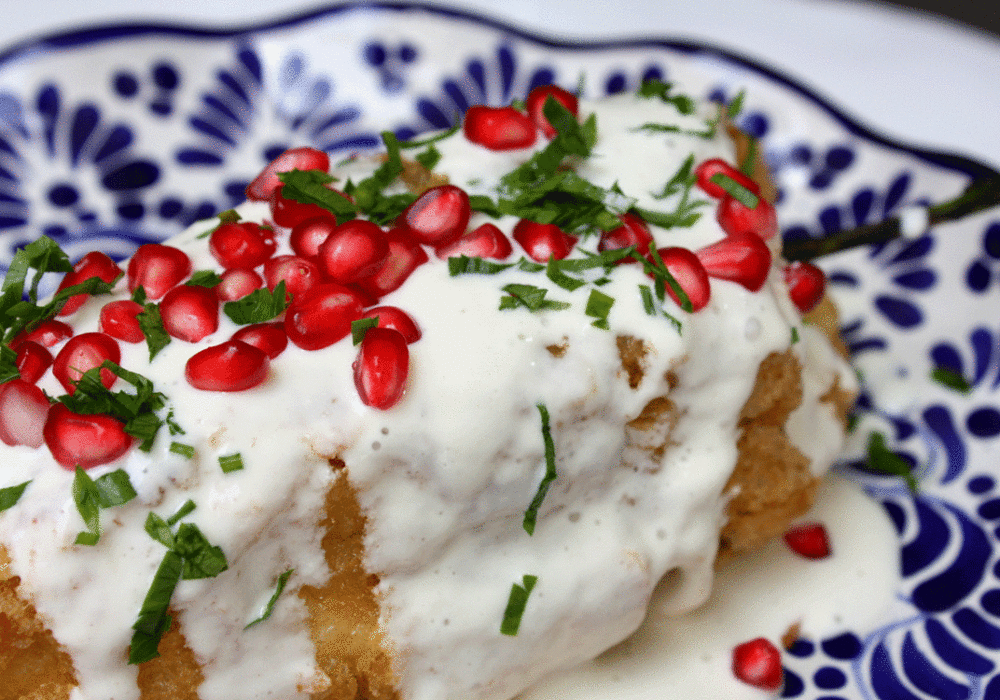From celebratory dishes to locally-sourced specialities, every region in Mexico has its own unique way of preparing food.

Tacos de pescado (Photo: Carlos Rivera via Flickr)
If asked to find a list of Best Cuisines in the World, you’d be hard pressed to unearth one that doesn’t include Mexican food. As you plumb the vast gustatory landscape of Mexico, don’t miss out on the regional favourites loved by Mexicans and tourists alike that I’ve compiled below. And when you finally do need to cook yourself, be sure to check out my book The Lazy Expat: Healthy Recipes That Translate in Mexico, a cookbook featuring 150 dishes you can make from any bare bones kitchen in Mexico.
Baja California
Given its location bordering the Pacific Ocean and Gulf of California, it’s no surprise that Baja California cuisine revolves primarily around seafood. Typical dishes include ceviches and pescado (fish) prepared tatemado (charred), empapelado (in parchment), and zarandeado (grilled and best enjoyed in tacos). Filete imperial de camarón is a local dish easy enough to make yourself. Just take some succulent shrimp, wrap them in bacon then grill (I like to insert a slice of jalapeño and baste it in barbeque sauce.) The fish in Baja California is so fresh that even those who normally don’t eat seafood can’t resist tacos de pescado estilo La Paz. It’s a healthy choice too, as these fish tacos are typically stuffed with grated cabbage and carrots.
Almejas chocolatas tatemados (clams) is a dish dating back to prehistoric times that makes use of the larger clams harvested in the region. The name “chocolatas” is misleading as it refers to the chocolate appearance and colour of the clams, rather than the preparation. Once the meat is extracted (be careful if trying this at home) it can be served in a variety of ways, often with tortillas and a mayonnaise dressing.
Another local dish with clams is ceviche de callos de almeja garra de león. The name comes from the “lion’s paw” shape of the clam used in the dish. The presentation is fresh, with chopped olives, onion, orange juice and a dash of tequila.
Mazatlán

Aguachiles (Photo: T. Tseng via Flickr)
Moving down the coast to Mazatlán in the state of Sinaloa, you’ll continue to find an emphasis on seafood, and particularly shrimp (camarones). Shrimp and tuna fishing, rather than tourism, is actually the city’s key industry (oddly, you can’t buy a decent can of tuna in the grocery stores). Aguachiles are made with marinated shrimp, lime, cucumber, and avocado. As in a number of dishes in Mazatlán, the shrimp is served raw (crudo) so you should order them only in better, establishments restaurants to ensure they’ve been prepared correctly.
The local tamale, Tamales Barbones, are made with shrimp, chiles and mangoes, a ubiquitous fruit in late summer. As you could probably guess, Tacos Gobernador, the local taco, are shrimp variations. Marlin en Escabeche Estilo Sinaloa (smoked tuna) is certainly a dish you won’t experience at home. This escabeche, made with tuna, cabbage, carrots, bay leaf and oregano, is served on tostadas. Callo de Lobina, is an escabeche made with sea bass and served in the same way, over tostadas. Chiles rellenos de jaiba (crab) are poblano chiles, (a mild chile), stuffed with seasoned crab meat.
Puerto Vallarta
Being another coastal town, escabeches (ceviches) and grilled fish (zarandeado) feature heavily in Puerto Vallarta’s most well-known dishes. In Pescado Embarazado, marinated chunks of fresh fish or shrimp are grilled on a skewer, a treatment more common in Puerto Vallarta than anywhere in Mexico.
Guadalajara

Carne en su jugo (Photo: Cesár Ramos via Flickr)
Meat returns to the menu in the regional favourites of the state of Jalisco. Argentine-influenced restaurants are numerous, specialising in Carne en Su Jugo (beef in its own juice). As Mexico’s second largest city of over eight million, you can find any cuisine under the sun in Guadalajara.
Birotes, golden, crunchy bread loaves, are made in Guadalajara, making hoagie-type sandwiches (lonches) common here. Put birotes and carne en su jugo together and you have Jalisco tortas ahogadas, made with beef or pork. Tortas Ahogados are served in other parts of Mexico as well, but the birotes make them best in Jalisco.
Another great lunch item are sopes (or pellizcadas y picaditas), smaller, thick fried corn tortillas ingeniously ridged to better load up on a variety of toppings such as refried beans, meats, cheese…you name it. Salsas for tortas, tacos and sopes can be chosen according to your level of hot Mexican blood. A delicious salsa made in this region and famous all over Mexico is Salsa Huichol, made using a secret family recipe.
Oaxaca

Tamales Oaxaqueños (Photo: TuriMexico.com)
Ask any Mexican what area in the country is most renowned for its cuisine, and they’ll likely tell you it’s Oaxaca. The state’s culinary scene is perhaps best known for the complex moles that can’t be found anywhere else in Mexico. There are eight major types including red, black, green, and chorizo (chichilo).
The regional chile relleno (stuffed chile) is Chile Rellano de Sardinas (sardines), and the region’s tacos are Tacos Tasajo, which are made with a dried smoked beef. Tamales Oaxaquenos have a notably different appearance as they’re wrapped in banana leaves, rather than the corn husks we’re familiar with (they also prepare them this way in Veracruz) which also lends them a distinct texture.
The regional tamale is often seasoned with chepil, a locally grown herb that you’ll find in several other dishes and even drinks. But the number one antojito (snack) on my list to eat in Oaxaca is Empanada de Amarilla, a larger-than-normal empanada with chicken and yellow mole. Reminiscent of the mojahetes of Mazatlán is Caldo en Piedra, a traditional, ancient dish made in a gourd. Like a molcajete, a variety of ingredients (seafood, vegetables, fish) can be introduced, at times even herbasante, an herb known for its medicinal properties.
Yucatán

Papadzules (Photo: Mikhaela Reid via Flickr)
The state of Yucatán offers cuisine distinct from other coastal areas in Mexico due to Mayan and Spanish influences on its cooking methods. La Cochinita Pibil is such an example, made from the pigs introduced by Spanish colonialists and cooked in a pit made in the ground, then lined with banana leaves to fully capture the smoke in the cooking.
The local enchilada, papadzules, can be a vegetarian option, as they’re typically made with eggs, pumpkin seeds and epazote – the latter a common Mexican herb – and covered in a tomato-chile sauce (warning: these can be HOT!). After a weekend of more labour-intensive cooking, Mondays are often a day for preparing Frijol con Puerco (pork) a simple black bean soup with traditional garnishes of avocado, onion, chopped radishes and salsa.
Fish and seafood remain central here. Pescado a la Tikinxic features fish marinated in achiote (a red spice made from annatto seeds common to Yucatan dishes), wrapped in banana leaves, then baked in an underground oven. The local ceviches, which might be marinated in a Mayan liquor made from local honey (caballito de xtabentún), are widely considered the best in Mexico due to the sweeter limes grown here. Sour oranges are another central flavour in the Yucatan, commonly grown on trees in people’s back yards. Poc Chuc are pork chops marinated in the sour juice and grilled.
For a chicken soup, you might try Sopa de Limas, a light, nutritious soup flavoured with lime juice. Escabeche Oriental isn’t made with fish as you might expect, but rather with marinated turkey or chicken (escabeche means “marinade”). For snacks, kibis in Yúcatan are the local version of Lebanese kibbeh – ground meat or cheese stuffed in a cornmeal shell (rather than bulgar wheat) and fried. Panuchos y salbutes are well-known in the Yucatán capital of Mérida, fried tortillas with black beans and toppings.

Chiles en Nogada (Photo: Turimexico.com)
There are many other exquisite dishes for the more adventurous. Mexican gastronomy can feature goat (birria), tripe (in menudo), nopales, pig’s feet (in traditional pozole), mutton, manta rays, pig cracklings, venison, turtles, cow’s head (tacos de cabeza), and insects.
One of the most famous and complex of Mexican dishes (Moles Nogadas) is usually reserved for special celebrations. If you see a sign in front of a restaurant that says “Chiles en Nogada” and it’s not August or September, you best go in!